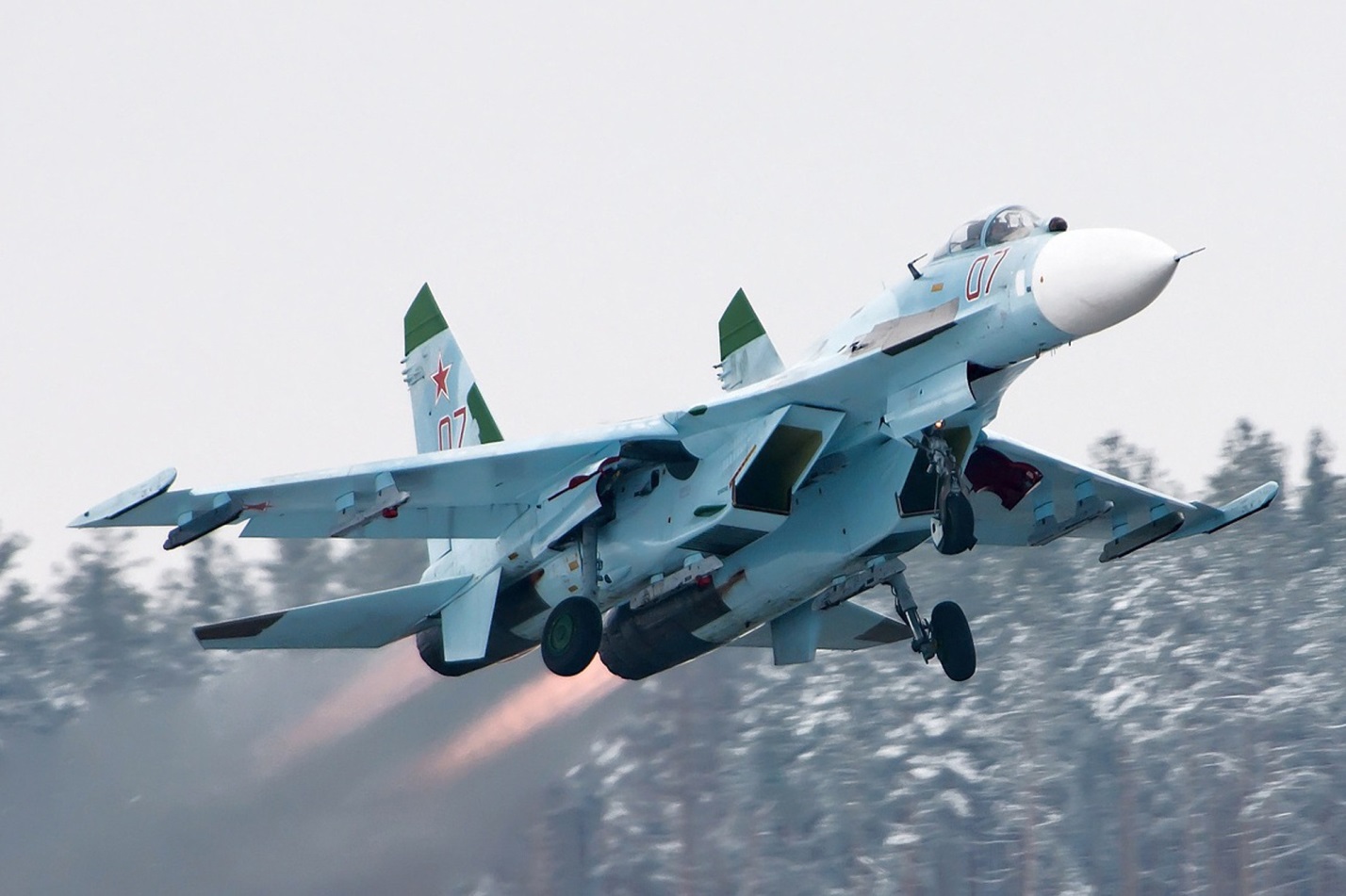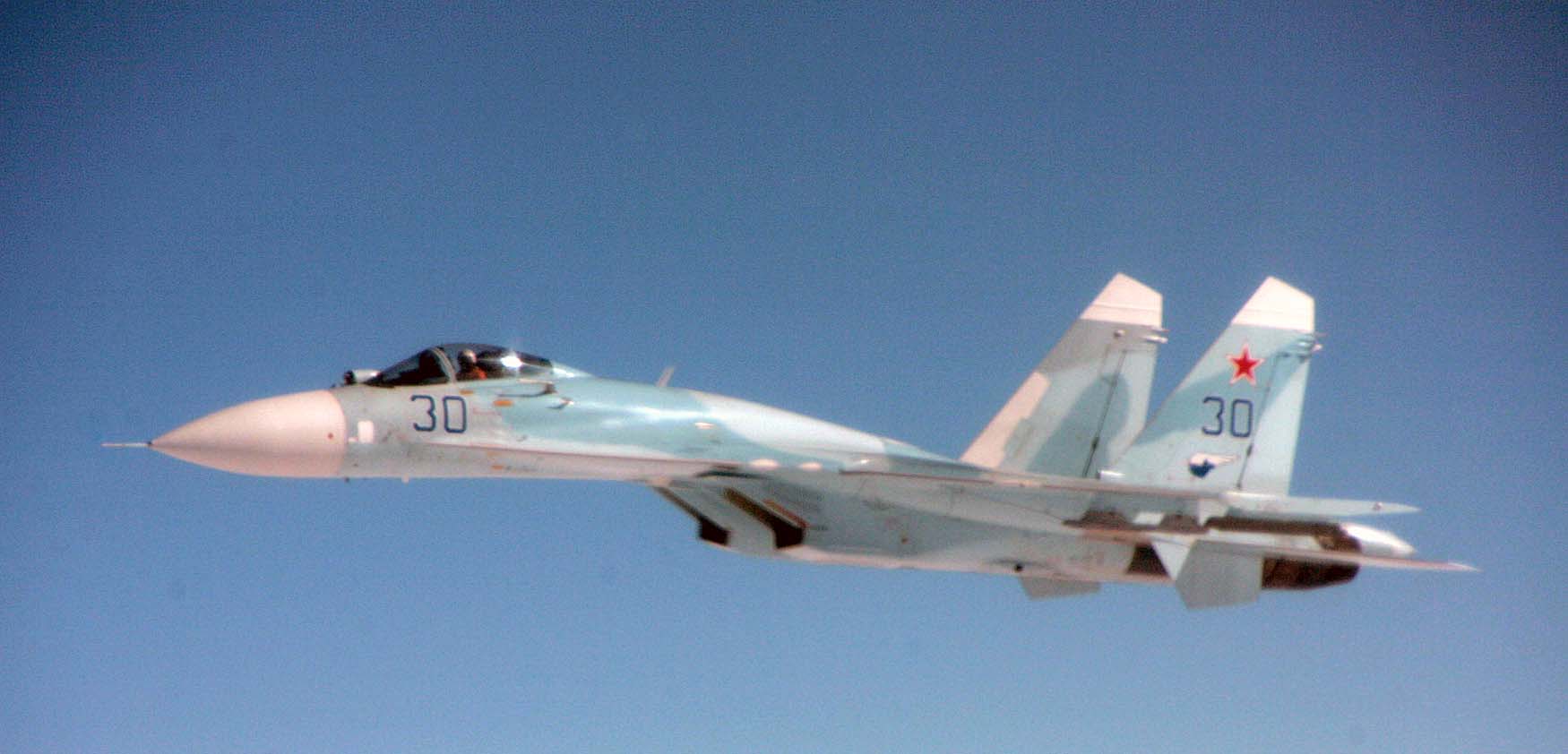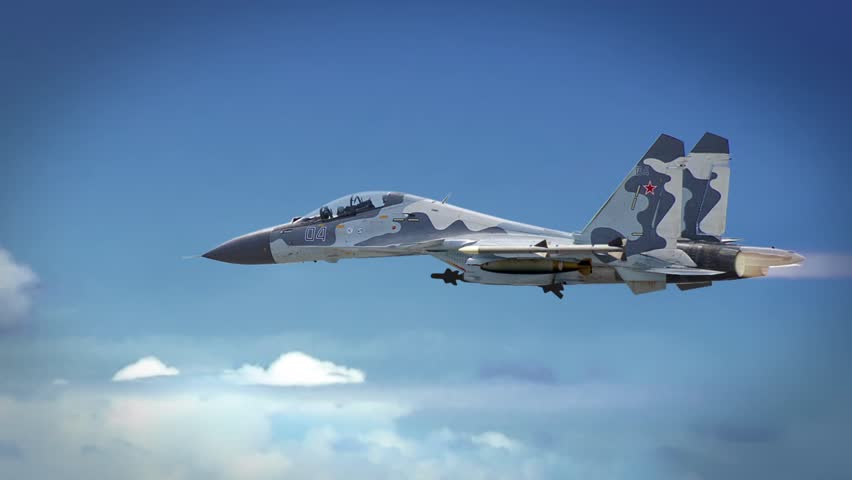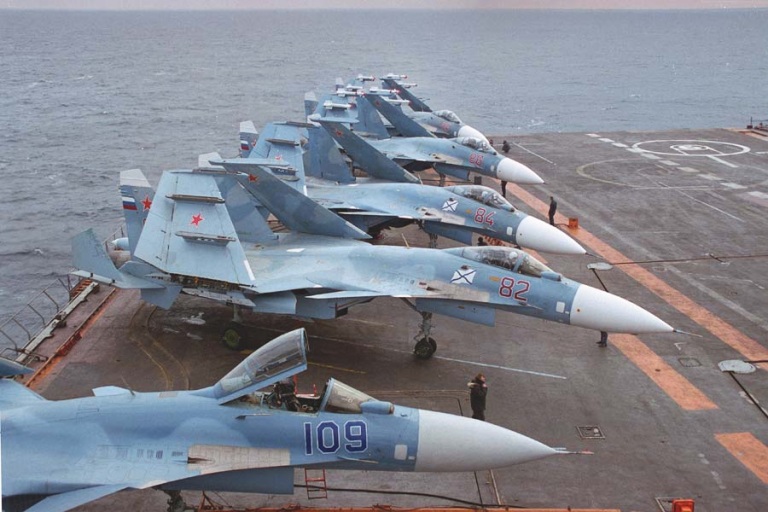
The Flanker is the preeminent air superiority fighter in the Soviet inventory. Introduced in 1985 and meant to be the counter to the US F-15 Eagle the Flanker became a formidable opponent to NATO planners and changed the paradigm in the realm of air to air warfare. Before the Su-27 the Soviets had always seemed to rely on quantity over quality, but the Flanker added a significant degree of quality to the mix. Able to maneuver as well or in some circumstances better than its western counterparts the Flanker utilized weapons and sensors that rivalled those of the west as well.
Historic production rates are difficult to pin down but much can be found at this site; fielding began in 1984/85 and continued through the decade. We know that most of the basic production models (Su-27S/P/SM were complete by the time the Soviet Union broke up, estimates that about 500 aircraft were fielded by 1990 with 367 in Europe; 138 ‘S’ variants with the Airforce (VVS) having the ability to drop bombs; and 229 with the Air Defence Force (PVO). We know, or believe, that production was reduced significantly due to financial and logistic difficulties. We know that much of the focus of production shifted to exports in the early 1990’s and that was at a much lower rate than serial production in the late 1980’s.
The difficulty in Northern Fury is predicting what would have happened in our situation, the Flanker was still in production and highly regarded. In coming up with a number of aircraft available it is helpful to remember that the Soviet Union had massive industrial and resource capacity, 5000 MiG-23s were produced in 18 years for instance: 280 per year. The older MiG-21 was almost twice that rate. There are many imponderable variables to consider so the following assumptions help considerably.
Production would be maintained at the pre-1991 level throughout as a minimum.
As it became clear that war would occur (late 1992), production would increase.
Export sales would not be entertained except within the Warsaw Pact.
There would be ongoing impetus to modernize.
Production Rate: If we accept that most of the base model aircraft existed before 1991, approximately 500 aircraft were built between 1985 and 1990 or 100 per year. So as a baseline an additional 200 aircraft will be available by the start of 1994.
Considering an increase due to an imminent war is much more speculative, in theory you could triple output by putting on three shifts at the factory instead of one, but that is unrealistic and does not consider resources (human, financial and feeder parts) and would be a sure fire tip off the west that you had something in mind. Perhaps a 40-50% increase in production as a SWAG; so another 50 airframes.
In total then the Soviet Union will field about 750 Su-27S/P/SM by the start of Northern Fury. These will be split about 30/70 between the PVO (Air Defence Army) and VVS (Frontal Aviation) and equip front line aviation Regiments.

Export: Historically 24 Su-27s (20x ‘SK’ or export versions of the basic ‘S’ model, and 4 training versions ‘UBK’) were delivered to China in 1992 and further deliveries were agreed to. In Northern Fury this doesn’t happen, but 12 of these ‘SK’ versions were provided to Czechoslovakia.
Modernization, Modifications: There are two derivatives of the Su-27 which concern us considering the timeframe: The Su-30 (Su-27PU), improved strike variant based on the two-seat trainer; and the Su-33 (Su-27K) Naval variant. Both of these variants were already in production, the Su-30 beginning in 1991 and the Su-33 in 1990, but both were very slow to build and were caught up in the turbulent times of the early 1990’s. Historically, 25x Su-30s and 24x Su-33s were built but it is unclear when, at least 13x Su-33s were available in 1995, and 2x Su-30s in 1992.
The Su-30 (Su-27PU) Flanker-C: In Northern Fury the Su-30s would have been produced on a much more consistent bases so we’ll assume that there are enough available to equip one Fighter-Bomber Aviation Regiment of 41 aircraft (3x Squadrons of 12 each and 5 spare/command). They will make up the 236th Fighter-Bomber Aviation Regiment (APIB), in the 15th Air Army supporting the Leningrad and Baltic Military Districts.

Su-33 (Su-27K) Flanker-D: Due to the deployment of a second aircraft carrier, double the fighters are required, plus some spares to replace combat losses. Each air wing has 24 aircraft, and 16 spares will be held for training and combat replacement for a total of 66 aircraft.
